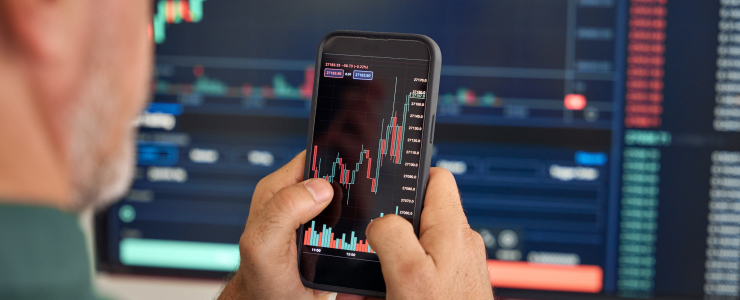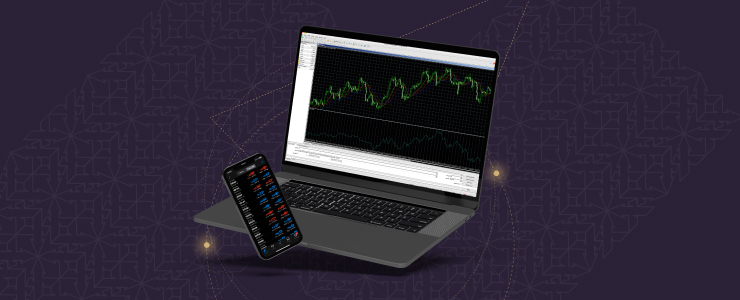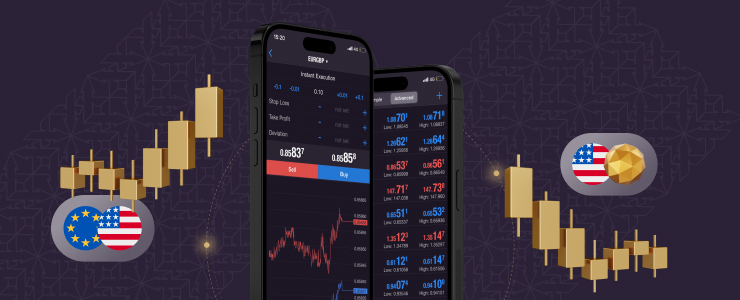Todos queremos saber qué es lo que ha llevado al éxito a los operadores profesionales en el comercio de divisas, qué estrategias han utilizado y cuánto tiempo les ha llevado alcanzar ese equilibrio.
Con billones negociados diariamente, el mercado de divisas es ideal para probar estrategias y experimentar la emoción del comercio de divisas. Algunos operadores sienten curiosidad; otros quieren dedicarse a ello profesionalmente. Pero no todos los operadores famosos comenzaron con grandes planes. Algunos operadores prosperaron con la orientación de grandes mentores, mientras que otros crecieron empezando poco a poco y aprovechando las oportunidades. El momento oportuno lo es todo, y estar en el lugar adecuado en el momento adecuado también ha sido clave para algunos operadores.
Cuando observamos a los operadores de divisas más famosos del mundo, podemos echar un vistazo a sus historias y aprender de ellas. En muchos casos, podemos ver claramente que muchos operadores profesionales comenzaron sus carreras con algunas características fundamentales, como disciplina, estrategia, paciencia y resiliencia. Aquí analizamos a algunos de estos operadores legendarios, cómo comenzaron y lo que han logrado al cambiar el panorama del comercio de divisas a través de décadas de operaciones impresionantes.

Los operadores más famosos del mundo en el mercado Forex
George Soros
Conocido popularmente como «el hombre que quebró el Banco de Inglaterra», George Soros es posiblemente el operador bursátil más famoso de la historia. Su operación de 1992 contra la libra esterlina se utilizó como ejemplo paradigmático de especulación audaz y bien documentada.
En aquel momento, el Reino Unido era miembro del Mecanismo de Tipos de Cambio Europeo (MTC), en el que la libra estaba fijada a un nivel relativo al marco alemán. Soros supuso que las presiones económicas provocarían la devaluación de la libra. Al vender en corto 10 000 millones de libras, Soros apostó contra la moneda y, finalmente, ganó 1000 millones de dólares en un día.
El éxito de Soros no fue casual. El éxito de Soros no fue accidental. Fue pionero en la teoría de la reflexividad, demostrando cómo las percepciones de los operadores pueden moldear los fundamentos económicos y crear bucles de retroalimentación explotables.
Stanley Druckenmiller
Druckenmiller era socio íntimo de Soros y desempeñó un papel decisivo en la operación con la libra esterlina de 1992. Su vida demuestra lo importantes que son cualidades como la disciplina, la paciencia y el pensamiento estratégico en el comercio de divisas.
Druckenmiller trabajó como investigador para el economista Jude Wanniski y luego pasó a trabajar para Soros en el Quantum Fund, llegando a gestionar miles de millones en activos. Su idea básica consistía en proteger el capital antes de lanzarse a aprovechar las oportunidades.
Druckenmiller fundó Duquesne Capital Management en el año 2000, empresa con la que obtuvo muy buenos resultados durante diez años. Era partidario de controlar las emociones y abordaba el trading como si se tratara tanto de psicología como de estrategia.
Bill Lipschutz
La historia de Bill Lipschutz es un ejemplo de cómo, a veces, los retos pueden ayudarnos a lograr más y alcanzar el siguiente nivel. Cuando era estudiante en la Universidad de Cornell, Lipschutz perdió parte de su herencia en el mercado de valores, pero debido a su mala inversión, rápidamente se pasó al comercio de divisas como una forma mejor de inversión que le permitía explorar oportunidades estratégicas.
Se incorporó a Salomon Brothers en 1982, donde fue responsable de la gestión de una cartera de divisas de 300 millones de dólares. Se le conocía como «el sultán de las divisas» por su gran dominio de la dinámica del mercado. Bill Lipschutz siempre defendió la idea de que el mercado de divisas requería un gran conocimiento del análisis técnico, pero también una profunda comprensión del comportamiento humano, los fundamentos económicos y los acontecimientos geopolíticos.
La gestión del riesgo era otro ingrediente clave de su enfoque. Siempre decía a los operadores que no arriesgaran más del 2-3 % de su capital en una sola operación y que aprendieran siempre de sus pérdidas, sin considerarlas meros fracasos. Para él, la coherencia y la disciplina eran importantes y podían ayudar a un operador a convertir los obstáculos en éxitos a largo plazo.
Andy Krieger
La herramienta secreta de Krieger era su capacidad para asumir riesgos calculados. En 1987, en Bankers Trust, Krieger vio una oportunidad en el dólar neozelandés, una moneda pequeña pero muy negociada. Se había dado cuenta de que el mercado tenía un precio ineficiente en relación con la oferta monetaria del país.
Tomó una posición corta con un apalancamiento masivo que superaba la oferta monetaria de Nueva Zelanda, obteniendo enormes beneficios y reforzando su reputación como operador audaz. La maniobra de Krieger demuestra lo importante que es actuar con decisión cuando se detecta una ineficiencia en el mercado. El uso del apalancamiento crea una posición de alto riesgo. Kieger abordó sus operaciones con un análisis cuidadoso y una comprensión clara de los riesgos que conllevaban.
Bruce Kovner
La historia de Bruce Kovner ejemplifica otro aspecto del trading: a veces, hagas lo que hagas, el trading es tu vocación y es él quien te encuentra a ti, en lugar de ser tú quien lo persiga agresivamente. Kovner, por ejemplo, era taxista y no empezó a operar con materias primas hasta finales de la década de 1970, con fondos prestados. Tras una exitosa operación con soja, se introdujo en el mercado de divisas y finalmente fundó Caxton Associates, uno de los mayores fondos de cobertura macroeconómicos del mundo.
La gestión del riesgo era una de sus prioridades y siempre subrayaba la importancia de los fundamentos macroeconómicos, la disciplina y la coherencia. También advertía a los operadores que no se expusieran en exceso a una sola operación. Se convirtió en un modelo a seguir para muchos aspirantes a operadores que aspiraban a una carrera a largo plazo.

Rasgos comunes entre los operadores profesionales en el mercado Forex
- Gestión de riesgos y protección del capital propio
- Ser emocionalmente disciplinado y ser capaz de controlar emociones como el miedo y la codicia.
- La capacidad de aprender y seguir evolucionando, enriqueciendo tus habilidades.
- Ser paciente y esperar siempre las oportunidades adecuadas.
- Asumir riesgos calculados en lugar de aleatorios y realizar investigaciones exhaustivas.
Consejos para inversores en el mercado de divisas
- Utilice cuentas demo y practique sin arriesgar capital real para probar estrategias.
- Elabora un plan de trading y establece puntos de entrada, salida y riesgo para todas las operaciones.
- Lleve un diario y registre sus operaciones para aprender de las ganancias y pérdidas.
- Controle el apalancamiento y utilícelo con prudencia.
- Manténgase al día y siga las noticias económicas mundiales.
Operadores de divisas comunes, tiempos extraordinarios
Tecnología, como la inteligencia artificial y los algoritmosthmic trading, están ampliando los límites y modernizando el comercio, lo que permite a los operadores perfeccionar sus herramientas y explorar más oportunidades. Al mismo tiempo, el talento y la habilidad humanos siguen siendo los mismos y no hay una forma rápida de enriquecerse, salvo el trabajo duro, la disciplina y la formación. Como nos enseñan estos operadores profesionales, el trading consiste en aprender, gestionar el riesgo y adaptarse.
Con el comercio cada vez más accesible a nivel mundial, vemos historias de éxito de operadores de todo el mundo. La mayoría de los operadores actuales operan desde casa, en lugar de desde las ajetreadas salas de Wall Street.

De principiante a operador profesional de divisas
El camino desde principiante hasta profesional no es sencillo ni fácil, y las trayectorias de George Soros, Stanley Druckenmiller, Bill Lipschutz, Andy Krieger y Bruce Kovner nos muestran que el mercado de divisas es una actividad estratégica que debe abordarse con seriedad, paciencia, profesionalidad y disciplina. No es un juego al que se juega al azar según el capricho de cada uno, sino más bien un trabajo que puede convertirse en una carrera profesional si la dedicación y la constancia son las fuerzas que lo guían.
Para aquellos operadores que quieran plantearse seriamente el trading en Forex, las lecciones que se pueden aprender de estos operadores profesionales son sencillas. Empiece poco a poco, fórmese, gestione el riesgo con cuidado y mantenga la resiliencia y la paciencia. Con dedicación, compromiso y el enfoque adecuado, es posible lograr resultados consistentes e incluso desarrollar una carrera profesional en el comercio de divisas.
Descargo de responsabilidad: Esta información no se considera asesoramiento ni recomendación de inversión, sino una comunicación comercial.




